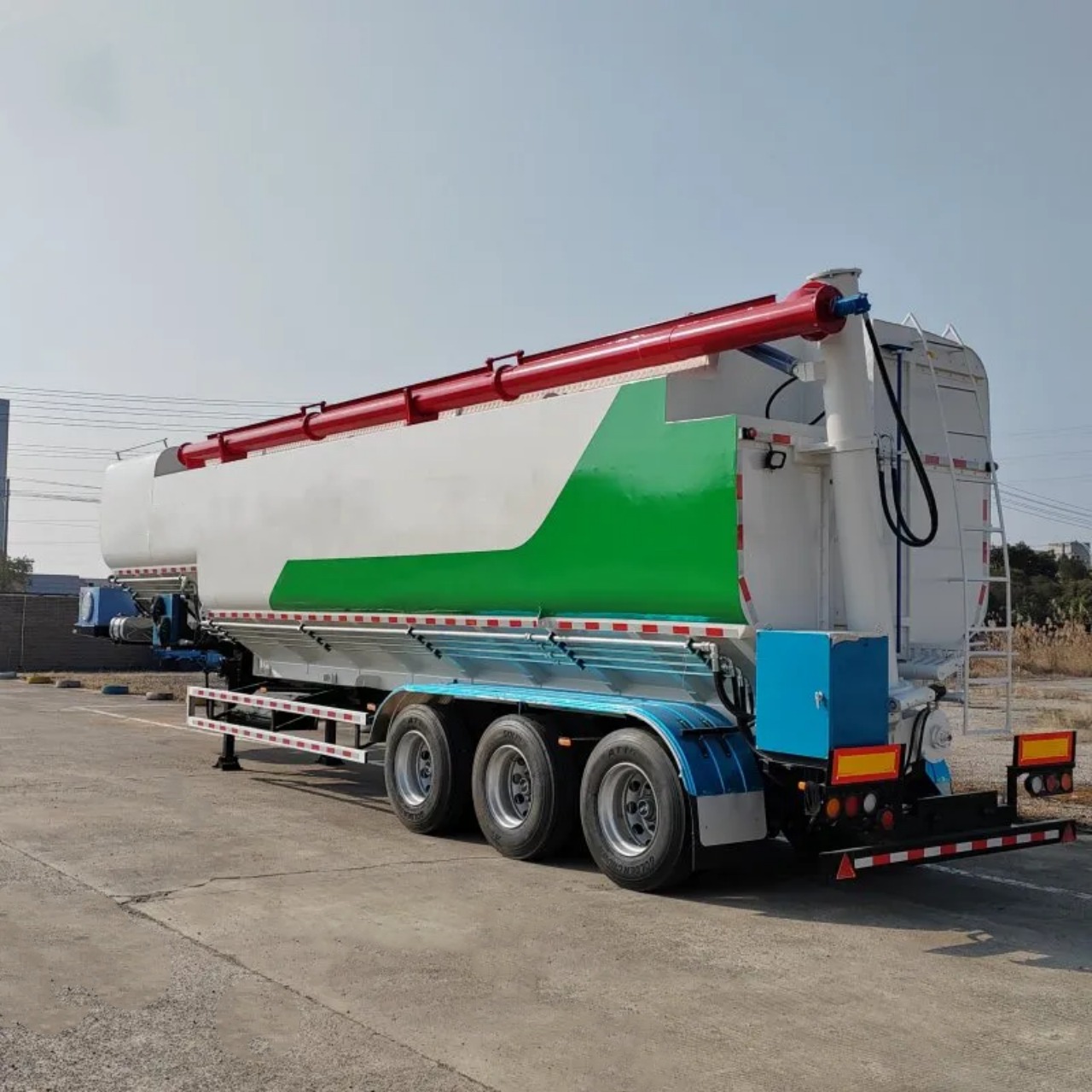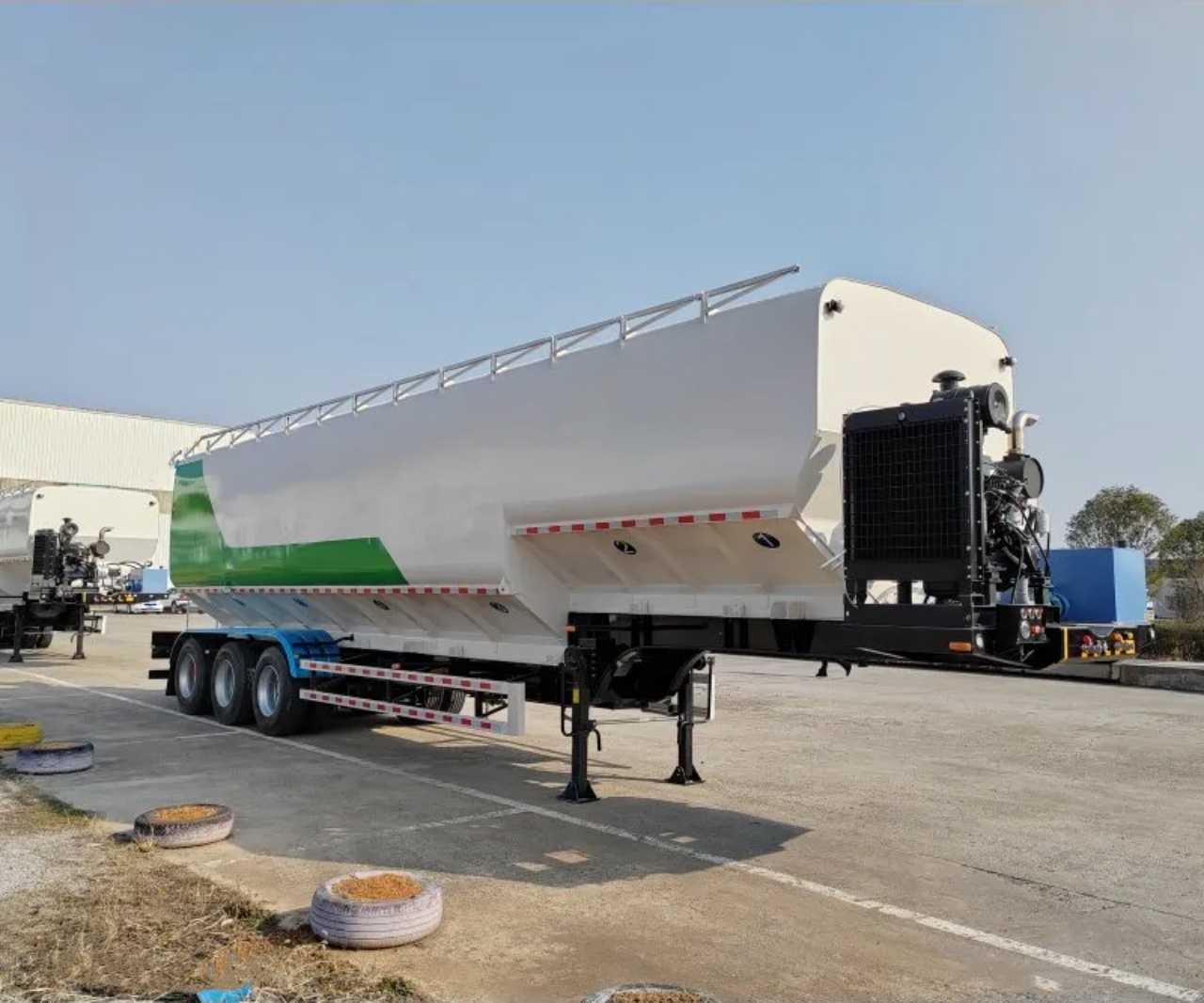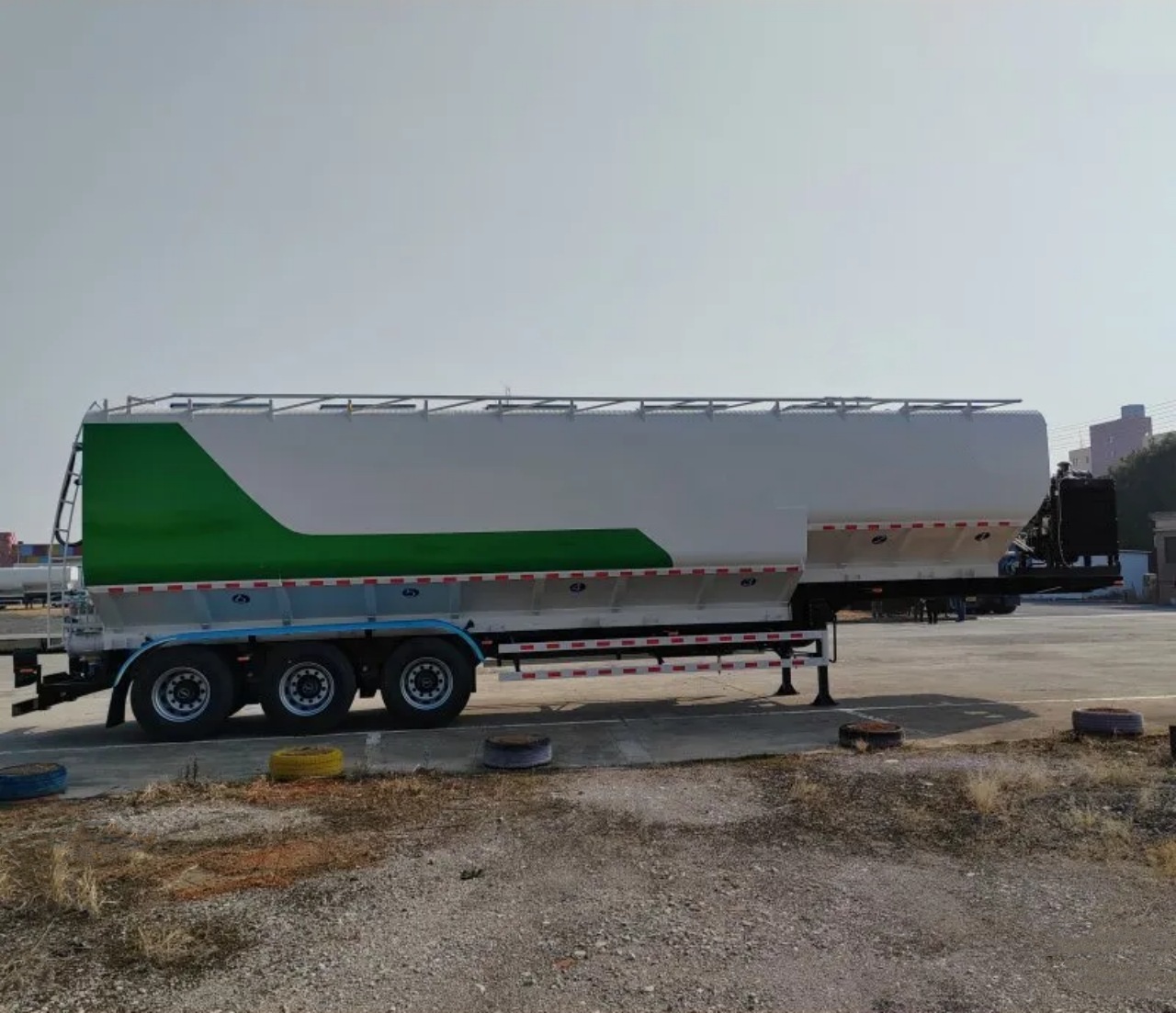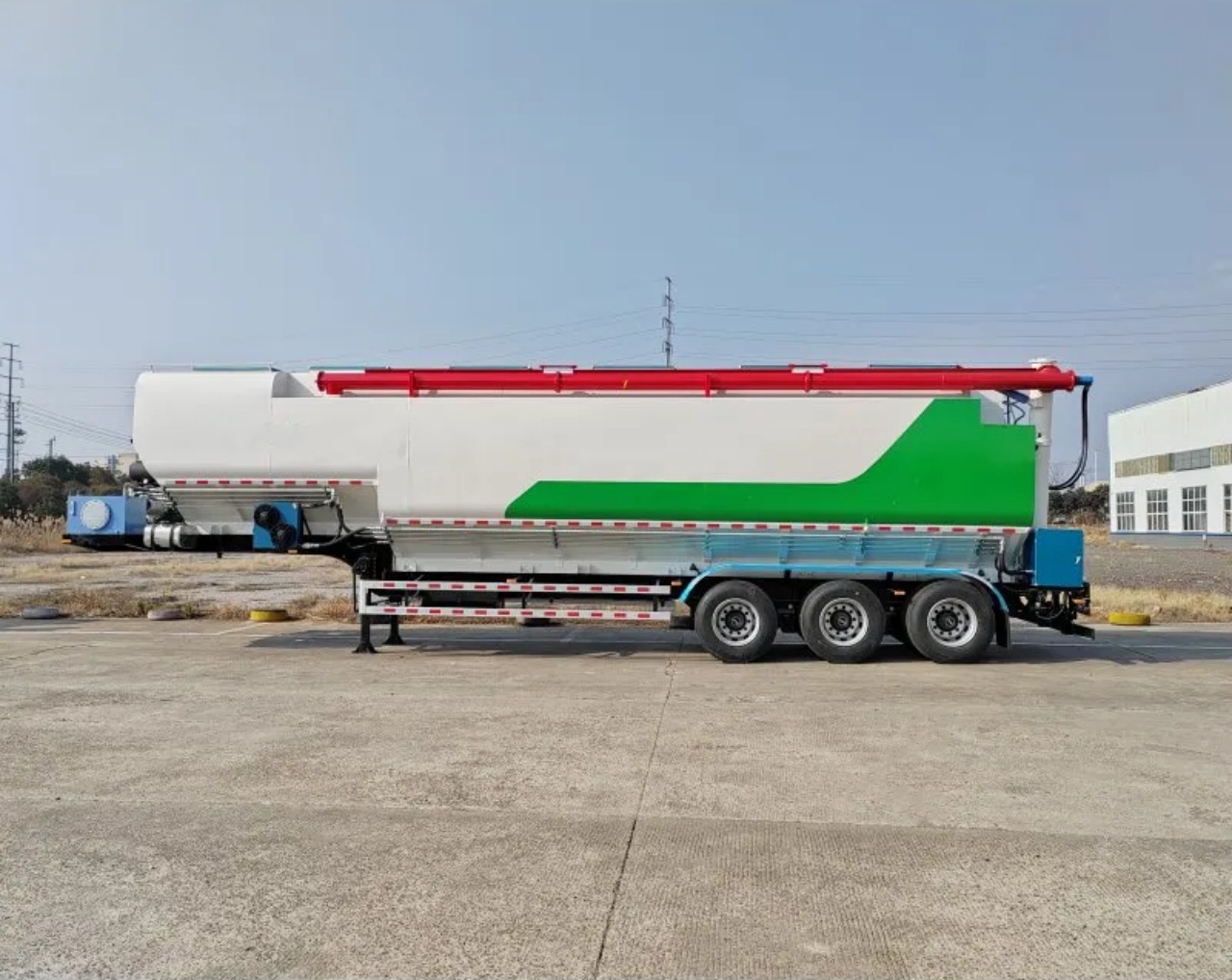Pneumatic trailers, often recognized by their distinctive cylindrical tanks and powerful compressors, are crucial in transporting a wide range of dry bulk materials across various industries. From construction sites to agricultural operations, these specialized trailers are designed to haul efficiently and discharge commodities that cannot be transported in traditional liquid tankers or box trailers. Understanding what goes into a pneumatic trailer involves delving into its construction, functionality, and the diverse materials it handles.
Construction and Components
A pneumatic trailer’s construction revolves around its ability to safely contain and transport dry bulk materials. The trailer typically consists of the followings:
- Tank: The cylindrical tank of a pneumatic trailer is its central feature, usually made from durable materials like carbon steel or aluminum. The tank’s capacity varies widely depending on the trailer’s size and intended use, ranging from 500 cubic feet to over 1,000 cubic feet.
- Compressor System: Essential for unloading the cargo, the compressor system includes a powerful engine-driven compressor that generates air pressure to discharge materials from the tank. These compressors are designed to handle the specific pressure and volume requirements of different materials.
- Discharge System: Complementing the compressor, the discharge system includes valves, hoses, and fittings that regulate the flow of materials out of the tank. This system ensures efficient unloading while minimizing dust emissions.
- Safety Features: Given the nature of the materials transported, pneumatic trailers are equipped with safety features such as pressure relief valves, emergency shut-off systems, and grounding cables to prevent static electricity buildup.

Materials Transported
Pneumatic trailers are versatile and can transport a wide array of dry bulk materials, each with its unique handling requirements:
- Cement: Used extensively in construction, cement is one of the most common materials transported in pneumatic trailers. The trailers are equipped with specialized systems to handle the fine particles and prevent clogging during unloading.
- Sand: Whether for construction, fracking, or industrial applications, sand is transported in pneumatic trailers due to its free-flowing nature and the ability to handle large volumes efficiently.
- Grain and Agricultural Products: From wheat and corn to fertilizer pellets, agricultural products benefit from pneumatic transport to maintain quality and prevent contamination.
- Plastics and Resins: Industries like plastics manufacturing rely on pneumatic trailers to transport resin pellets, ensuring efficient delivery to production facilities.
- Chemicals: Certain chemicals, such as powders used in manufacturing processes, are transported in pneumatic trailers equipped with corrosion-resistant tanks and fittings.
- Minerals and Ores: Minerals like limestone, coal, and ores such as iron ore are transported in pneumatic trailers designed to handle abrasive materials and ensure minimal wear.
Operational Considerations
Operating a pneumatic trailer requires specialized knowledge and adherence to safety protocols:
- Loading: Materials are loaded into the trailer through hatches located on the top of the tank. Proper loading techniques are crucial to prevent overfilling and ensure stability during transport.
- Transport: Pneumatic trailers are designed to withstand the rigors of road transport, with features like reinforced frames and axles capable of supporting the weight of full tanks.
- Unloading: Upon reaching the destination, the pneumatic trailer utilizes its compressor system to unload the material. Gravity and air pressure work together to empty the tank efficiently.
- Cleaning and Maintenance: Between loads, pneumatic trailers undergo thorough cleaning to prevent cross-contamination and maintain operational efficiency. Regular maintenance of the compressor, valves, and tank integrity is essential to prevent breakdowns.

Industry Applications
The versatility of pneumatic trailers makes them indispensable across various industries:
- Construction: From delivering cement for concrete production to transporting aggregates like sand and gravel, pneumatic trailers support construction projects of all sizes.
- Energy: In the energy sector, pneumatic trailers transport materials used in fracking operations, ensuring the efficient extraction of oil and natural gas.
- Agriculture: Farmers rely on pneumatic trailers to transport fertilizers, grains, and feed efficiently, supporting crop production and livestock operations.
- Manufacturing: Industries such as plastics, chemicals, and minerals depend on pneumatic trailers to transport raw materials essential for manufacturing processes.
Environmental and Economic Impact
Pneumatic trailers contribute to sustainability and cost-efficiency in logistics:
- Reduced Waste: Efficient unloading and minimal residue in pneumatic trailers reduce material waste compared to other transport methods.
- Energy Efficiency: Optimized designs and operational practices minimize energy consumption per ton-mile compared to alternative transport modes.
- Cost Savings: Bulk transport using pneumatic trailers reduces handling costs and transportation expenses, benefiting both producers and consumers.

Future Trends
Advancements in pneumatic trailer technology continue to focus on efficiency and environmental impact:
- Automation: Integration of automated loading and unloading systems improves operational safety and efficiency.
- Material Handling: Innovations in materials and coatings enhance trailer durability and minimize maintenance requirements.
- Emissions Reduction: The Development of cleaner-burning engines and emission control systems aligns with global sustainability goals.
Conclusion
In conclusion, the pneumatic trailer serves as a cornerstone of modern logistics, facilitating the efficient transport of diverse dry bulk materials essential to countless industries. From construction sites to agricultural fields and manufacturing facilities, these specialized trailers embody versatility, reliability, and sustainability in the transportation of goods. Understanding what goes into a pneumatic trailer underscores its pivotal role in shaping economic activities and meeting the evolving needs of global supply chains.


